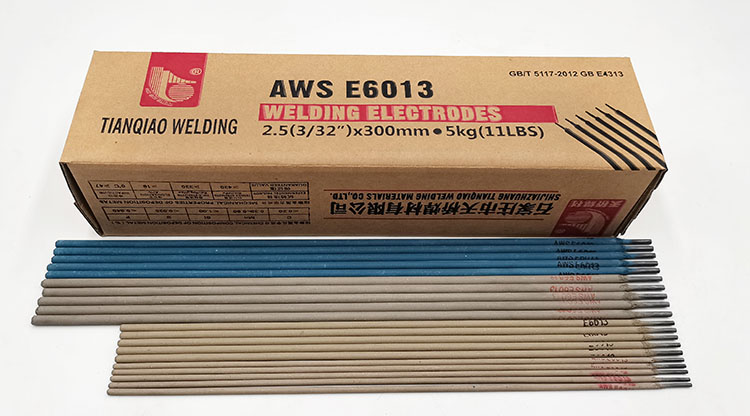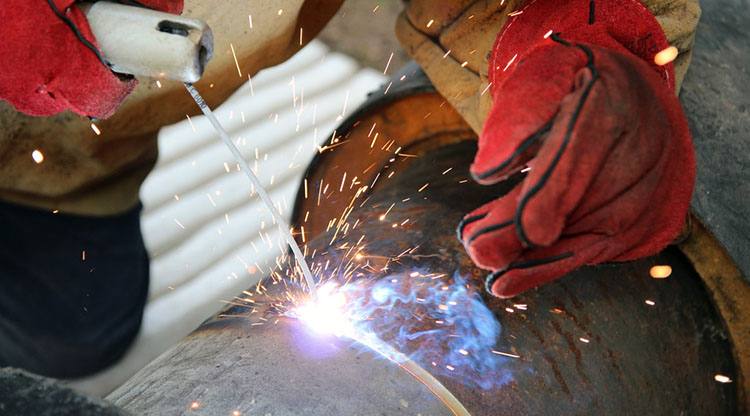The welding parameters of electrode arc welding mainly include electrode diameter, welding current, arc voltage, number of welding layers, power source type and polarity, etc.
1. Selection of electrode diameter
The choice of electrode diameter mainly depends on factors such as the thickness of the weldment, the type of joint, the position of the weld and the level of welding. On the premise of not affecting the welding quality, in order to improve labor productivity, generally tend to choose a larger diameter electrode.
For welding parts with a larger thickness, a larger diameter electrode should be used. For flat welding, the diameter of the electrode used can be larger; for vertical welding, the diameter of the electrode used is no more than 5 mm; for horizontal welding and overhead welding, the diameter of the electrode used is generally no more than 4 mm. In the case of multi-layer welding with parallel grooves, in order to prevent the occurrence of incomplete penetration defects, a 3.2 mm diameter electrode should be used for the first layer of weld. Under normal circumstances, the electrode diameter can be selected according to the thickness of the weldment (as listed in Table TQ-1).
|
Table:TQ-1 |
The relationship between electrode diameter and thickness | |||
|
Weldment thickness(mm) |
≤2 |
3-4 |
5-12 |
>12 |
|
Electrode diameter(mm) |
2 |
3.2 |
4-5 |
≥5 |
2. Selection of welding current
The size of welding current has a great influence on welding quality and productivity. If the current is too small, the arc is unstable, and it is easy to cause defects such as slag inclusion and incomplete penetration, and the productivity is low; if the current is too large, defects such as undercut and burn-through are likely to occur, and spatter increases.
Therefore, when welding with electrode arc welding, the welding current should be appropriate. The size of the welding current is mainly determined by factors such as electrode type, electrode diameter, weldment thickness, joint type, weld space location and welding level, among which the most important factors are electrode diameter and weld space location. When using general structural steel electrodes, the relationship between the welding current and the electrode diameter can be selected by the empirical formula: I=kd
In the formula, I represents the welding current (A); represents the electrode diameter (mm);
k represents the coefficient related to the diameter of the electrode (see Table TQ-2 for selection).
|
Table:TQ-2 |
k value for different electrode diameters |
|||
|
d/mm |
1.6 |
2-2.5 |
3.2 |
4-6 |
|
k |
15-25 |
20-30 |
30-40 |
40-50 |
In addition, the spatial position of the weld is different, and the magnitude of the welding current is also different. Generally, the current in vertical welding should be 15%~20% lower than that in flat welding; the current of horizontal welding and overhead welding is 10%~15% lower than that in flat welding. The welding thickness is large, and the upper limit of the current is often taken.
Alloy steel electrodes with more alloying elements generally have higher electrical resistance, large thermal expansion coefficient, high current during welding, and the electrode is prone to redness, causing the coating to fall off prematurely, affecting the welding quality, and the alloying elements are burned a lot, so welding The current is reduced accordingly.
3. Selection of arc voltage
The arc voltage is determined by the arc length. If the arc is long, the arc voltage is high; if the arc is short, the arc voltage is low. In the welding process, if the arc is too long, the arc will burn unstable, spatter will increase, penetration will decrease, and the outside air will easily invade people, causing defects such as pores. Therefore, the arc length is required to be less than or equal to the diameter of the electrode, that is, short arc welding. When using an acid electrode for welding, in order to preheat the part to be welded or reduce the temperature of the molten pool, sometimes the arc is slightly stretched for welding, so-called long arc welding.
4. The selection of the number of welding layers
Multi-layer welding is often used in arc welding of medium and thick plates. More layers are beneficial to improve the plasticity and toughness of the weld, especially for cold bend corners. However, it is necessary to prevent the harmful effects of overheating the joint and expanding the heat-affected zone. In addition, the increase in the number of layers tends to increase the deformation of the weldment. Therefore, it must be determined by comprehensive consideration.
5. Selection of power supply type and polarity
DC power supply has stable arc, small spatter and good welding quality. It is generally used for welding important welding structures or thick plates with large rigidity structures.
In other cases, you should first consider using an AC welding machine, because the AC welding machine has a simple structure, low cost, and easier to use and maintain than a DC welding machine. The choice of polarity is based on the nature of the electrode and the characteristics of welding. The temperature of the anode in the arc is higher than the temperature of the cathode, and different polarities are used to weld various weldments.
Post time: Sep-30-2021


